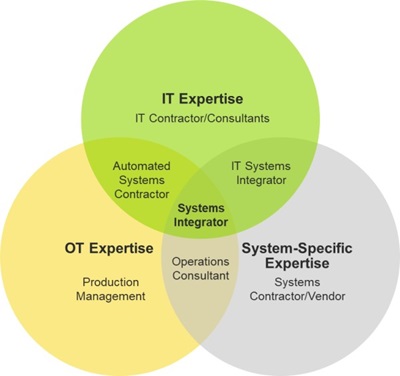- Energy Storage Systems Integrators
- Building Energy Management Systems
- Energy Management Devices
Systems Integrators Build Value for Industrial Systems with EMSs

Systems integrators (SIs) are increasingly integrating energy management systems (EMSs) into the production control systems that manage operations at industrial facilities. The integration of an advanced EMS solution into the overall system offers control room staff the ability to track and optimize power usage in a way that can significantly reduce costs without having an impact on the quality of the output.
The Traditional Environment for EMS Solutions
The largest use of EMS solutions is in commercial buildings and industrial plants. In the case of buildings, it is customary for a general contractor to hire electrical contractors to install an EMS that integrates with the other building automation systems (BASs) including the HVAC, lighting, and the security systems. These BASs are the largest power loads in most commercial buildings and are integrated into a building management system (BMS) that automates management of the various building systems.
Systems Integrators and the New Role for EMSs
BASs are rarely the largest power loads in production facilities where there is a range of large manufacturing equipment onsite. Manufacturers hire a SI to oversee and manage the effort the integrate the manufacturing systems into an automated system. This enables customers to operate the manufacturing process from a control room. The figure below shows the various roles of different kinds of third-party consultants an organization may contract for specialized expertise. SIs take a comprehensive list of customer requirements and construct a turnkey facility for manufacturing.
Third-Party Support Options for Manufacturers

(Source: Guidehouse Insights)
The Departmental Responsibilities for Energy at Industrial Facilities
After the SI transfers responsibility for the facility, it has been customary that two independent customer departments monitor energy. The facilities department is responsible for getting power to the manufacturing equipment while the production department monitors power quality at the manufacturing equipment. These two departments closely collaborate, but the reporting structure is separate. This collaboration made sense when power was a basic commodity and options were limited. However, the power industry is changing. There are more pricing options along with multiple alternative energy sources. There are opportunities to reduce costs with participation in load shedding and other demand response programs. These cost-reduction programs involve adjusting production schedules and are best done when the production department has control of the situation.
SIs Integrating Advanced EMSs into Production
The solution to this coordination involves integrating the EMS into the production system. Progressive SIs started this new level of integration for customers, giving them improved cost management for energy. One important challenge for SIs is selecting the best EMS solution to be incorporated into the control system. It is already difficult and costly to change out an EMS that has become obsolete and is not integrated with other systems. It is exponentially more difficult when the EMS is integrated into another system.
The energy marketplace is evolving quickly. EMS vendors must show SI partners that they are committed to maintaining and updating its technology over time and are designed to integrate—not just with building systems, but also with custom-built production systems for use over many decades. The Guidehouse Insights’ December 15, 2021 webinar, The Growing Impact of EMS Solutions: Evolving Value-Added Sales Channels for EMS, details issues associated with SIs working with EMSs.